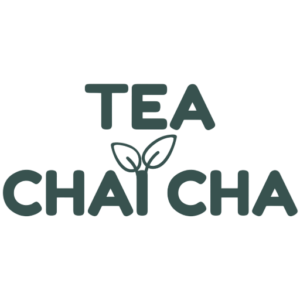Green tea has been my go-to choice for a while now, and I can’t help but sing its praises. Why, you ask?
It’s not just about the taste; it’s about the countless health benefits that come in every steaming cup.
You’ve probably heard about its antioxidant-rich goodness, right? Well, it’s true.
Green tea has a little army of antioxidants that fights off those free radicals in our bodies.
But does green tea have caffeine in it?
Yes, green tea has caffeine. An 8-ounce cup of green tea typically contains around 20–50 milligrams of it.
Of course, the exact amount can vary depending on the brand, brewing method, and steeping time, but it’s generally in that ballpark.
And hey, if you’re not a fan of caffeine at all, fear not!
Decaffeinated green tea is here to save the day, giving you all the benefits without the buzz.
Does Green Tea Have Caffeine?
The answer is yes, green tea does have caffeine, it’s not caffeine-free.
But don’t fret; it’s not like guzzling a cup of rocket-fueled coffee.
Green tea does have caffeine, but it’s on the gentler side.
You get that subtle energy boost without feeling like you’ve strapped yourself to a caffeine rocket.
Now, let’s talk numbers for a sec.
According to the FDA, an 8-ounce cup of green tea contains about 30 to 50 milligrams less caffeine than that cup of coffee.
So, if you’re looking for a way to perk up without going overboard, green tea might just become your new buddy.
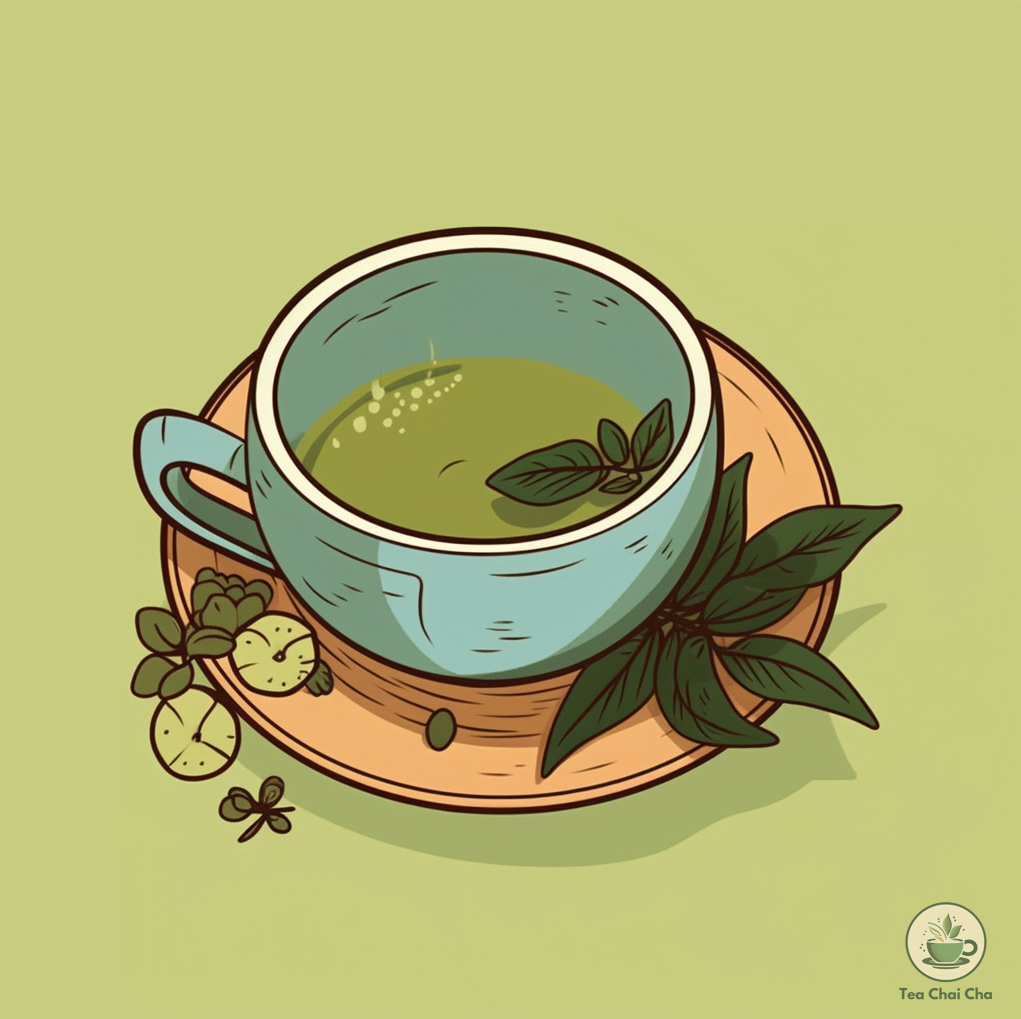
How Much Caffeine Is in a Cup of Green Tea?
In an 8-ounce cup (that’s 230 milliliters for our metric pals) of green tea, you’re looking at an average of about 35 milligrams of caffeine.
But the caffeine content in green tea isn’t set in stone.
Nope, it’s got some wiggle room.
That same 8-ounce cup can have anywhere from 30 to 50 milligrams of caffeine.
That’s like a game of caffeine roulette every time you brew!
Now, you might be wondering, why this variation?
Well, it all boils down to the tea leaves themselves.
You see, the caffeine content depends on factors like the type of green tea, how it’s brewed, and even the region where the tea leaves were grown.
But wait, there’s a little secret you might not know.
When I talk about caffeine in tea, I’m usually talking about the dry weight.
That means, before you add water and let it steep, the tea leaves contain a certain amount of caffeine.
And that caffeine gets released into your cup during brewing.
So, the longer you steep your tea, the more caffeine you’ll get.
How Much Caffeine in Green Tea Leaves?
You might be surprised to learn that green tea leaves pack just around 1.6% to 3.5% caffeine by dry weight.
Yep, that’s not much, especially when you think about the espresso shots in your morning coffee.
What’s intriguing, though, is that green tea brings a buddy to the party – l-theanine.
It’s like the Robin to caffeine’s Batman.
This little amino acid promotes alertness without the jitters.
So, even though green tea leaves aren’t caffeine powerhouses, they’ve got a few tricks up their sleeve.
Decaf Green Tea
When it comes to decaffeinated green tea, the magic lies in the process of stripping away the caffeine while keeping the flavor intact.
How Is Green Tea Decaffeinated?
Tea leaves are like little caffeine sponges, and decaffeination is the art of wringing them out.
There are two main methods to achieve this:
-> Solvent-Based Decaffeination
This method is like a caffeine extraction mission.
Tea leaves are dampened and steamed, then soaked in a solvent like ethyl acetate.
The solvent grabs hold of the caffeine molecules and carries them away.
Afterward, the solvent is removed, leaving behind decaffeinated tea leaves.
The result?
Tea that’s light on caffeine (though I don’t recommend it as this process affect flavor profile.)
-> Non-Solvent-Based Decaffeination
Here, they use pressurized carbon dioxide (yes, the same stuff that makes fizzy drinks bubbly) to do the heavy lifting.
CO2 acts like a caffeine magnet, pulling those jittery molecules out of the tea while leaving its flavor unscathed.
It’s a bit like a magic trick that keeps the tea’s essence intact.
CO2 extraction is far better and safer than the solvent based extraction.
How Many Milligrams of Caffeine is in Decaffeinated Green Tea?
Now, the million-dollar question: how many milligrams of caffeine remain in decaffeinated green tea?
The answer varies depending on the specific brand and the decaffeination method used.
On average, decaffeinated green tea contains about 2 to 5 milligrams of caffeine per 8-ounce cup.
To put that into perspective, a regular cup of green tea can have anywhere from 30 to 50 milligrams of caffeine.
That’s less than a tenth of the caffeine found in regular green tea.
So, if you’re looking to cut caffeine entirely, it’s worth checking the label or doing a quick online search for your chosen brand’s caffeine content.
10 Factors Affecting Caffeine Content in Green Tea
When it comes to enjoying a cup of green tea, I’ve learned that not all cups are created equal.
The caffeine content in green tea can vary, and it’s influenced by several factors.
Let’s consider my experience with green tea and explore these factors.
1. Tea Leaf Variety
One of the key factors affecting caffeine levels in green tea is the variety of tea leaves used.
I’ve noticed that some green teas, like Sencha and Gyokuro, tend to have higher caffeine content compared to others, such as Dragonwell or Jasmine green tea.
So, it’s essential to choose the right variety if you’re looking for a specific caffeine level.
2. Growing Conditions
The environment where the tea plants grow plays a crucial role in caffeine content.
I’ve discovered that tea leaves cultivated at higher altitudes generally contain more caffeine.
The slower growth due to cooler temperatures and increased stress on the plant can lead to higher caffeine production.
3. Harvesting Time
The timing of the tea harvest is another factor I’ve come across.
Young tea leaves, especially the buds and the first few leaves, tend to have higher caffeine content.
When green tea is harvested early in the spring, it often contains more caffeine than tea picked later in the season.
4. Processing Method
The way those tea leaves are processed can also sway caffeine levels.
Green tea is known for its minimal oxidation process, but variations exist.
Steaming and pan frying are two of the main methods used.
Chinese green teas are usually steamed but Japanese ones are pan fried.
Steamed teas, like Sencha, usually retain more caffeine than pan-fried teas, such as Dragonwell.
These different methods result in unique caffeine profiles, adding to the charm of green tea.
5. Leaf, Stem, or Bud?
When it comes to making tea from the Camellia sinensis plant, we have a few options: leaves, stems, and buds.
-> Buds
The finest, most delightful teas usually come from the buds of the plant.
These little guys are like the cream of the crop.
They contain the most caffeine and give your tea that extra zing.
If you’re into green tea, you’ll often find it made from the tippy-top leaves and buds.
They have that fresh and vibrant flavor you might love in your cup of green goodness.
-> Stems
They’re the mellow ones in the bunch.
Stems have the least caffeine and a gentler flavor.
This kind of tea is known as Kukicha, and it’s pretty popular in Japan.
People even call it “Twig Tea” because it’s made from, you guessed it, the stems!
So, when you’re sipping your tea, just remember that different parts of the plant bring different flavors and caffeine levels to your cup.
6. Brewing Time and Temperature
My personal brewing experience has taught me that I can control the caffeine content in my cup of green tea to some extent.
If I want a milder cup, I steep the tea for a shorter time and use cooler water.
Conversely, a longer steeping time and hotter water result in a stronger, more caffeinated brew.
7. Leaf-to-Water Ratio
It’s all about balance, isn’t it?
When you use more tea leaves per cup, you’ll get a stronger brew with more caffeine.
Conversely, if you go light on the leaves, your tea will be gentler on the caffeine front.
Finding your preferred ratio is like tailoring a suit – it’s all about the perfect fit.
8. Leaf Size and Quality
The size and quality of the tea leaves also matter.
Finer, smaller leaves and broken leaf particles tend to release more caffeine during brewing than whole, larger leaves.
So, choosing tea with larger leaves can lead to a milder cup.
9. Storage and Age
Green tea is a sensitive soul when it comes to storage.
Exposure to air, light, and moisture can lead to caffeine degradation.
So, store your green tea in an airtight container, away from sunlight, and consume it while it’s fresh to enjoy its full caffeine potential.
10. Personal Tolerance
Lastly, it’s crucial to recognize that caffeine affects everyone differently.
Over time, I’ve learned to understand my own tolerance for caffeine.
Some people may be more sensitive to it, while others can handle larger amounts without any issues.
Comparing Caffeine Levels of Different Green Teas
| Green Tea Type | Caffeine Level (per 8 oz cup) |
|---|---|
| Sencha | 30-40 mg |
| Matcha | 60-70 mg |
| Gyokuro | 30-50 mg |
| Dragonwell | 25-50 mg |
| Gunpowder | 35-40 mg |
| Jasmine | 20-60 mg |
| Hojicha | 10-15 mg |
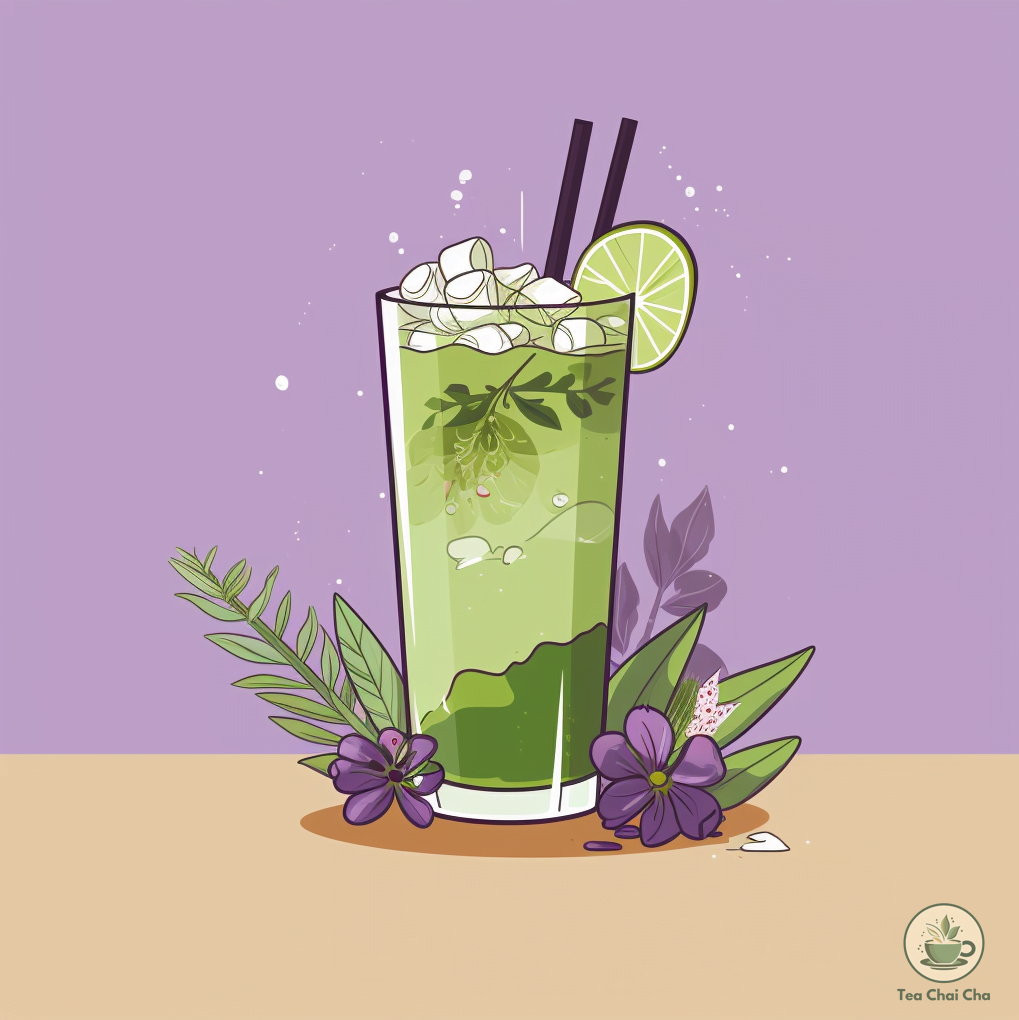
Which Green Tea Has the Most Caffeine
Green tea is not only a delightful beverage but also known for its caffeine content, which can vary depending on the type of green tea you choose.
In this section, I’ll break down the caffeine levels in three popular green teas: Matcha, Gyokuro, and Sencha.
Let’s find out which one packs the most caffeine punch!
1. Matcha: 60-70 mg Caffeine per 8-ounce Cup
I absolutely love matcha!
It’s known for having the highest caffeine content among green teas.
When I make a cup of matcha, I usually use about 1 teaspoon of matcha powder.
In an 8-ounce cup, that adds up to around 60-70 milligrams of caffeine.
That’s more caffeine than you’d find in most other green teas.
2. Gyokuro: 30-50 mg Caffeine per 8-ounce Cup
Gyokuro is another delicious green tea option.
It typically contains about 35-50 milligrams of caffeine per 8-ounce cup.
While it’s not as caffeine-packed as matcha, it still offers a nice pick-me-up.
3. Sencha: 30-40 mg Caffeine per 8-ounce Cup
Sencha is a gentle and popular green tea variety.
It’s a great choice if you prefer a milder caffeine kick.
In an 8-ounce cup, you’ll find about 30-40 milligrams of caffeine in sencha.
It’s perfect for a calm and soothing tea time.
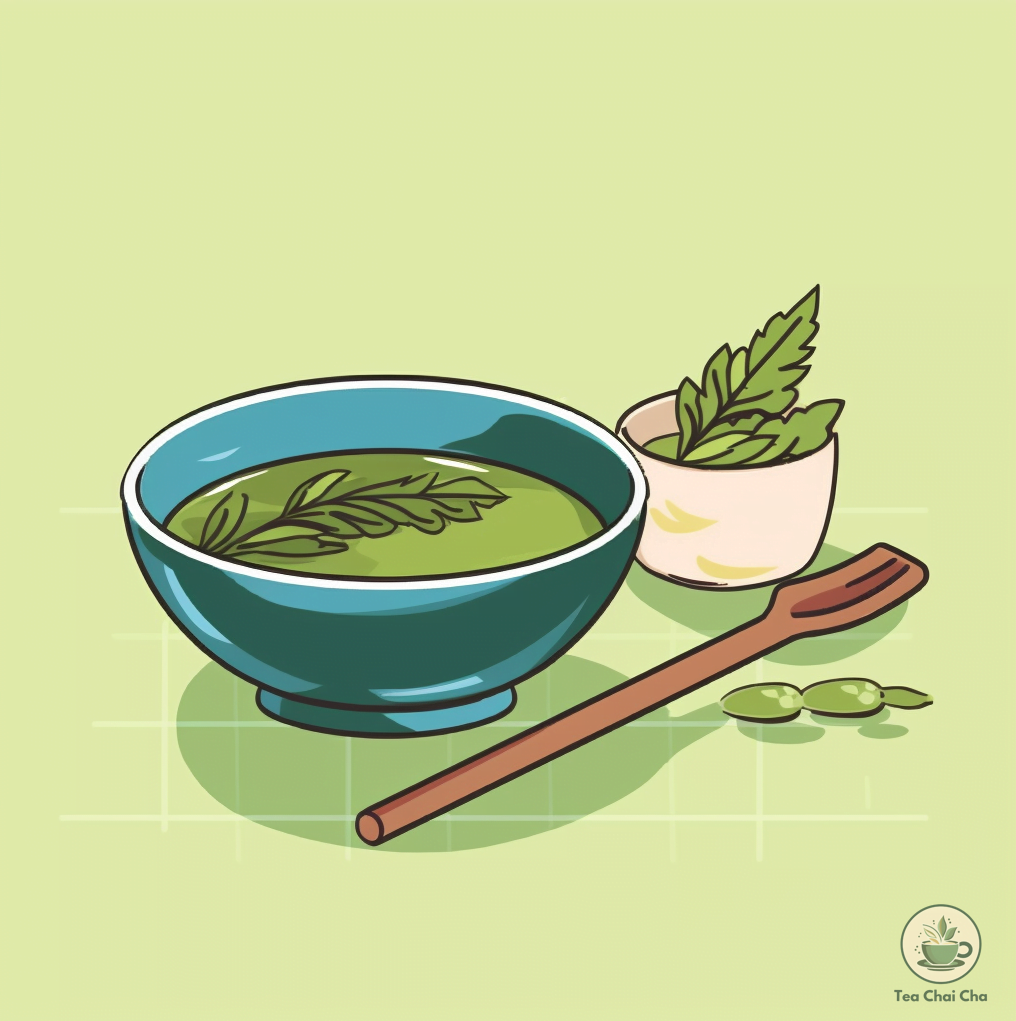
Which Green Tea Has the Least Caffeine
Whether you’re sensitive to caffeine or simply looking to unwind without the buzz, there are several green tea options to choose from.
In this section, I’ll introduce you to three green teas with varying caffeine levels, so you can find the one that suits your taste and preferences.
1. Dragonwell: 25-50 mg Caffeine per 8-ounce Cup
Dragonwell, also known as Longjing tea, is a popular choice among green tea enthusiasts.
It hails from China and offers a mellow, nutty flavor profile.
What’s great about Dragonwell is that it contains a moderate amount of caffeine, typically ranging from 25 to 50 milligrams per 8-ounce cup.
This makes it a good option if you’re looking for a green tea with a balanced caffeine kick that won’t leave you jittery.
2. Kukicha: 10-25 mg Caffeine per 8-ounce Cup
Kukicha, often referred to as “twig tea,” is a unique green tea variety that originates from Japan.
What sets Kukicha apart is its low caffeine content, usually falling in the range of 10 to 25 milligrams per 8-ounce cup.
The tea is made from the stems, stalks, and twigs of the tea plant, resulting in a slightly sweet and light flavor.
If you’re aiming for a green tea that’s gentle on the caffeine front, Kukicha is an excellent choice.
3. Decaf Sencha: <5 mg Caffeine per 8-ounce Cup
If you’re in search of a green tea with the least caffeine, look no further than Decaf Sencha.
As the name suggests, it’s a decaffeinated version of Sencha, a popular Japanese green tea.
Decaf Sencha contains minimal caffeine, typically less than 5 milligrams per 8-ounce cup.
This makes it an ideal option for those who want to enjoy the soothing taste of green tea without any noticeable caffeine effects.
It maintains the grassy, vegetal notes of Sencha without the jolt.
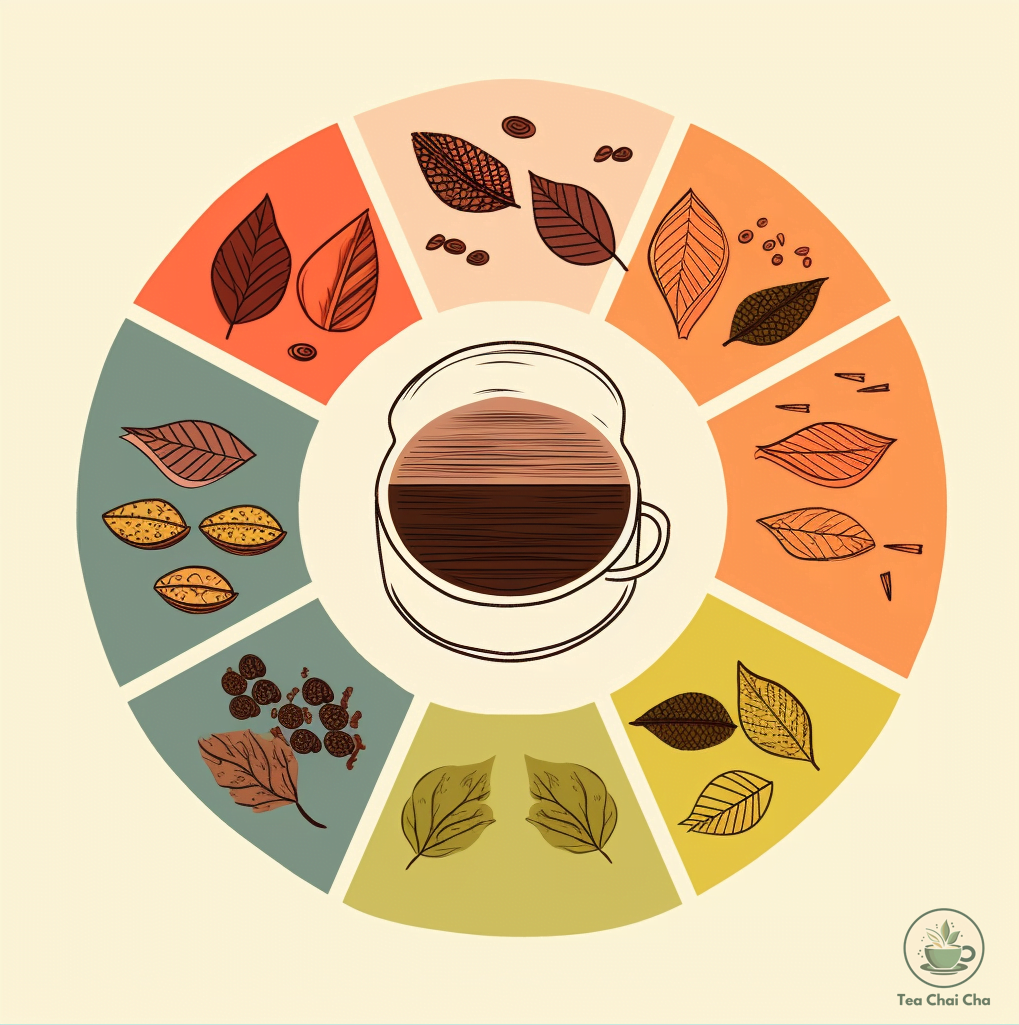
Caffeine in Green Tea vs. Other Teas
| Tea Type | Caffeine Content (per 8 oz cup) |
|---|---|
| Green Tea | About 30-50 mg |
| Black Tea | About 40-70 mg |
| White Tea | About 15-30 mg |
| Oolong Tea | About 30-50 mg |
| Herbal Tea (e.g., Chamomile, Peppermint) | Usually caffeine-free |
Now, let me explain a bit further:
1. Green Tea
Green tea generally contains around 30-50 milligrams of caffeine per 8-ounce cup.
This can vary depending on factors like the tea’s preparation method and the specific type of green tea.
2. Black Tea
Black tea tends to have a bit more caffeine than green tea, with about 40-70 milligrams per cup.
The exact amount can vary depending on the brand and steeping time.
3. White Tea
White tea typically has a lower caffeine content compared to green and black tea, with about 15-30 milligrams per cup.
It’s a milder option for those looking to reduce caffeine intake.
4. Oolong Tea
Oolong tea falls in between green and black tea in terms of caffeine content, with approximately 30-50 milligrams per 8-ounce cup.
The specific type of oolong can affect this range.
5. Herbal Tea
Herbal teas, such as chamomile or peppermint, are usually caffeine-free.
They are great options for those who want to avoid caffeine altogether.
Caffeine in Green Tea vs. Other Beverages
| Beverage | Caffeine Content (8 oz / 230 ml) |
|---|---|
| Green Tea | 30–50 mg |
| Instant Coffee | 27–173 mg |
| Brewed Coffee | 102–200 mg |
| Espresso | 240–720 mg |
| Black Tea | 40–70 mg |
| Yerba Mate | 65–130 mg |
| Soft Drinks | 23–37 mg |
| Energy Drinks | 72–80 mg |
Now you can easily compare the caffeine levels in your favorite beverages.
Keep in mind that these are approximate values, and caffeine content can vary based on factors like brewing time and brand.
Does Green Tea Affect Your Sleep?
Green tea can affect your sleep.
Personally, I’ve experienced this firsthand.
I used to be a big fan of green tea, sipping it throughout the day for its supposed health benefits.
But one day, I decided to have a cup in the evening, thinking it would be a good way to wind down. Big mistake.
As the night wore on, I found it increasingly difficult to fall asleep.
My mind was racing, and I couldn’t seem to relax.
It wasn’t the caffeine content that was bothering me, as green tea generally has less caffeine than coffee, but it was something else in the tea that was keeping me awake.
I did a bit of research and discovered that green tea contains an amino acid called L-theanine, which has a calming effect and can improve focus.
While this is great during the day, it can become a problem when you’re trying to sleep.
The L-theanine seemed to be enhancing my alertness rather than helping me unwind.
So, I learned my lesson the hard way.
If I want a good night’s sleep, I now steer clear of green tea in the evening.
Stick to herbal teas or warm water before bedtime, and you’ll likely have a more restful night.
Does Green Tea Cause Dehydration?
Green tea doesn’t cause dehydration. In fact, it can be quite hydrating.
From my own experience, I’ve noticed that when I drink a cup of green tea, I don’t feel parched or dried out like I might after drinking coffee.
It doesn’t have that strong diuretic effect that can make you lose more fluids than you take in.
Of course, it’s essential to balance your green tea consumption with plain water, especially if you’re in a hot climate or exercising vigorously.
But overall, you can enjoy your green tea without worrying too much about it dehydrating you.
It’s a refreshing and healthy beverage option that doesn’t leave you feeling thirsty.
Is Green Tea the Best Source of Caffeine?
Green tea isn’t necessarily the best source of caffeine, but it’s one of the healthier ones.
If you’re looking for a caffeine kick, you might think of coffee as the go-to superstar.
It packs a powerful punch of caffeine, waking you up faster than a rooster’s crow.
But, here’s the catch: it can also give you the jitters and that dreaded caffeine crash.
Now, enter green tea.
While it has less caffeine than a cup of joe, it brings more to the table.
Green tea contains an amino acid called L-theanine, which teams up with caffeine to deliver a smoother, longer-lasting energy boost.
You get the perk without the rollercoaster ride.
So, green tea isn’t the heavyweight champ of caffeine, but it’s the wise choice for those who like their energy without the caffeine drama.
Plus, it’s packed with antioxidants, making it a double win for your health.
Related Caffeine Guides
- Does Tea Have Caffeine?
- Does White Tea Have Caffeine? High and Low Caffeine Options!
- Does Oolong Tea Have Caffeine?
- How Much Caffeine in Black Tea – High/Low Caffeine Black Teas
- How Much Caffeine in Green Tea – Numbers to Know!
Caffeine In Different Green Teas
Frequently Asked Questions (FAQs)
How much caffeine is extracted from every brew of green tea?
The caffeine content in first steep of green tea can vary, but on average, a cup (8 ounces) contains about 30-50 milligrams of caffeine.
The levels of caffeine will start dropping after every brew.
So, you can experience up to 20% reduction in caffeine content after each steep.
Do you consider 1-2 teabags of green tea as caffeine-free?
1-2 teabags of green tea are not caffeine-free; they can still contain around 20-90 milligrams of caffeine depending on factors like brewing time and type of tea.
It’s true unless you are using decaffeinated green tea bags.
Which has more caffeine: coffee or green tea?
Coffee generally has more caffeine than green tea.
An average cup of coffee (8 ounces) contains around 95 milligrams of caffeine, which is considerably more than what you’d find in a cup of green tea (30-50 mg).
